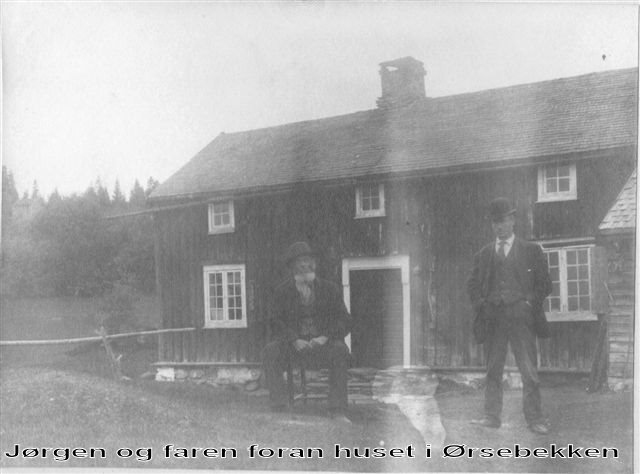The house ruins from the croft “Øssebekken”, as it is pronounced locally, are situated on the plains below. The name probably originates from “aur” (ør), the gravel at the outlet of the river Havelva.
In 1865, Lorns and Margrete ran this place. Lorns was an “immigrant” from Gudbrandsdalen and was no ordinary crofter. He was a fiddler and went around playing with Einar Jystad in Sjøsveet. In addition, he ran a general store in Ørsebekken, and he bought the goods from T. Jensen in Trondheim. He probably didn’t become rich at this store, but the spirit of the shopkeeper was obviously awakened in him, as he later ended up as a trusted man in the E. A. Smith company in Trondheim, and moved his family here. One of his daughters married the managing director of the company, while his son became the head of the worldwide company Guggenheim. All the children after Lorns and Margrete did well in the trade, and they were all music lovers.
After the family of Lorns and Margrete had moved, new people came to the place in 1873 - Johan Hogstad and Martine from Verdal. They were the last crofters of the place, and had two sons, Jon and Jørgen. As with many others at this time, the family had virtually no money, and had to shop on credit at the grocery store until they could pay their debt with fish or similar. The main commodities they needed to buy were barley flour and string to tie fishing nets with.
America-travel
The situation meant that Jon and Jørgen had to leave young to make money for the family, and it was the start of an exciting story far from home for both of them. The story is well documented through correspondence with the father and includes both American travel and Lofoten fishing.
The story ended with Jørgen returning home when his father died (1909), married a neighbouring girl in Sjøsveet (Inga), and eventually moved to Nessgård on the other side of the bay - at Sundnesnesset. He was allowed to run the Ørsebekken on settlement conditions and he rowed the crop by boat across the bay. Jon came home from America in 1923, but died the following year by drowning. The inheritance of 32,000 was shared between the widow and Jørgen (after a lengthy trial as Jørgen was bequeathed everything, while the widow thought the testament was void!)

